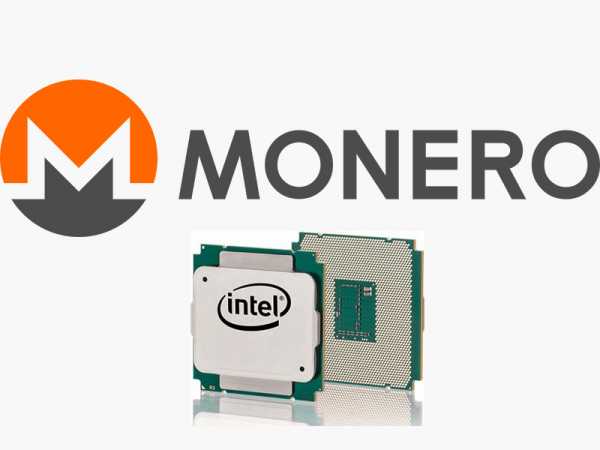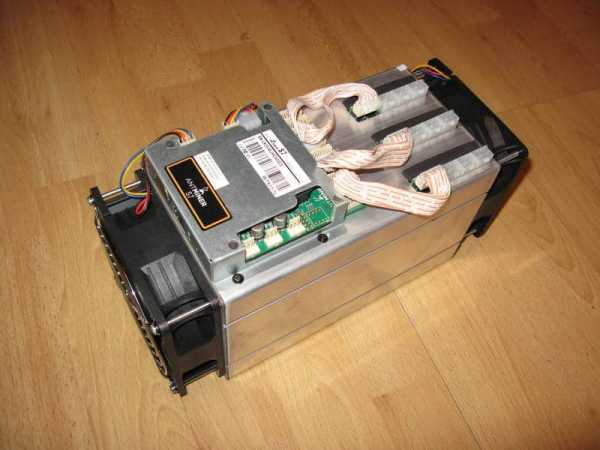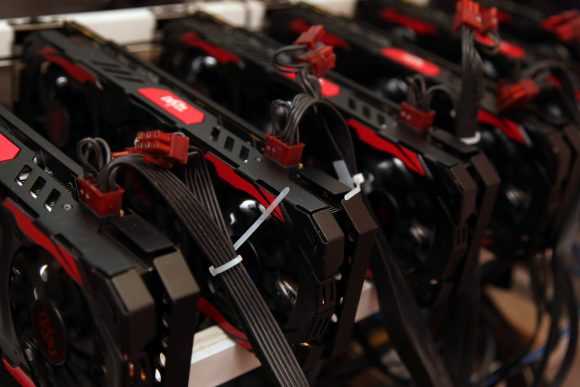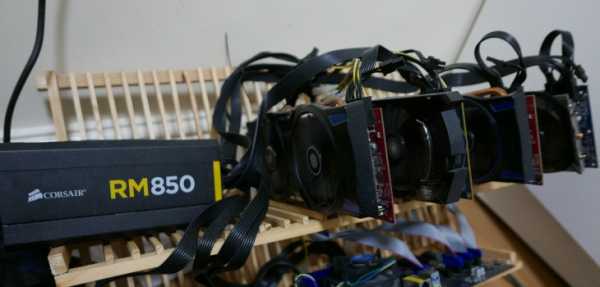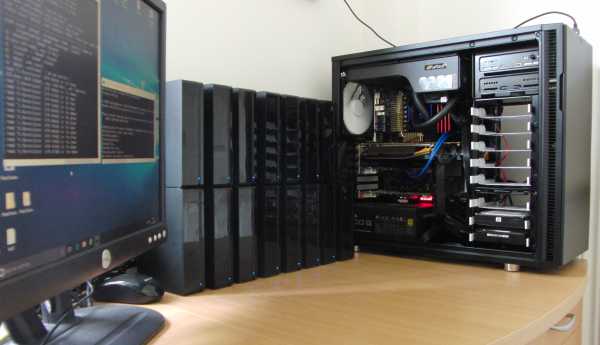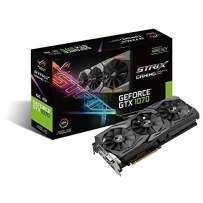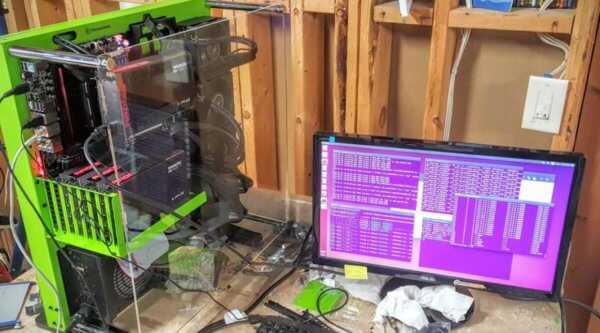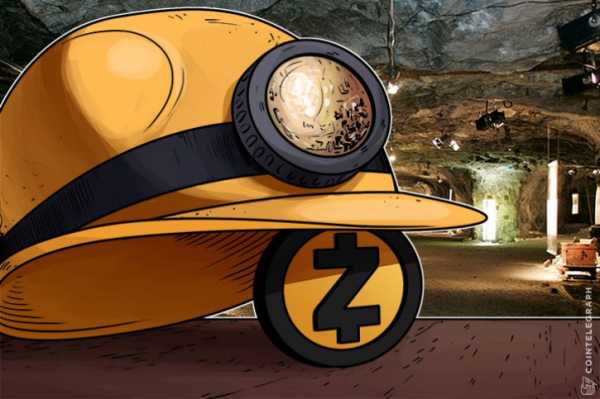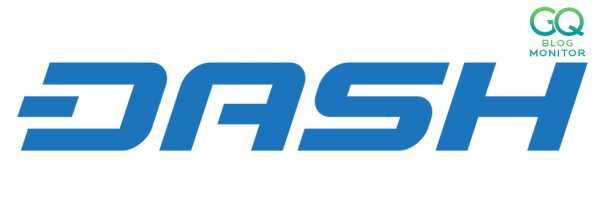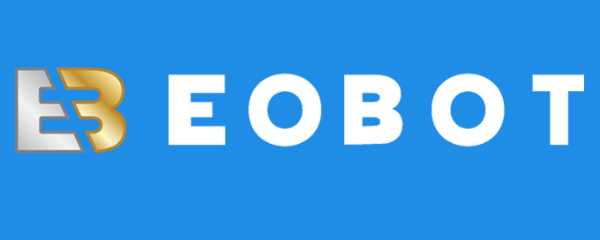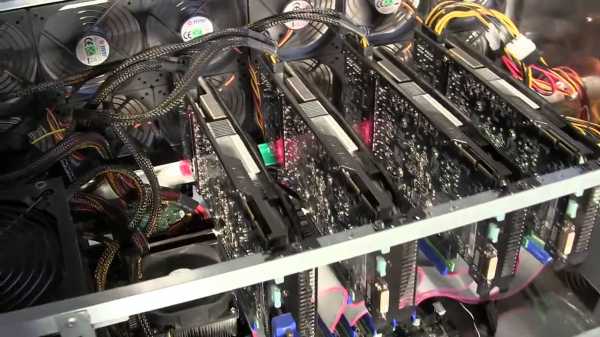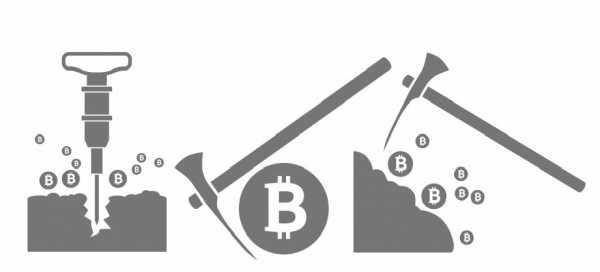Bitcoin asic майнинг
5 Best Bitcoin Mining Hardware ASICs 2018 (Comparison)
Hobby Bitcoin mining can still be fun and even profitable if you have cheap electricity, an efficient bitcoin mining machine and get the best Bitcoin mining hardware.
It’s important to remember that Bitcoin mining is competitive. Today it is not smart for the average person to mine since China’s cheap electricity has allowed it to dominate the mining market. If you want bitcoins then you are better off buying bitcoins.
Bitcoin Mining Hardware Comparison
What is an ASIC Bitcoin Miner?
Since it’s now impossible to profitably mine Bitcoin with your computer, you’ll need specialized hardware called ASICs.
Originally, Satoshi intended for Bitcoin to be mined on computer CPUs. However, Bitcoin miners discovered they could get more hashing power from graphic cards. Graphic cards were then surpassed by ASICs (Application Specific Integrated Circuits).
Nowadays all serious Bitcoin mining is performed on dedicated Bitcoin mining hardware ASICs, usually in thermally-regulated data-centers with access to low-cost electricity. Think of a Bitcoin ASIC as specialized Bitcoin mining computers, Bitcoin mining machines, or “bitcoin generators”.
Don’t Get Confused
There is Bitcoin mining hardware, which mines bitcoins.
There are also Bitcoin hardware wallets like the Ledger Nano S, which store bitcoins.
How to Find the Best Bitcoin Miner
There are some important factors to look at when determining which Bitcoin mining ASIC to buy:
Hash rate – How many hashes per second can the Bitcoin miner make? More hashes cost more, which is why efficiency is crucial…
Efficiency – You’ll want to buy the most efficient bitcoin mining hardware possible. Since miners use a large amount of electricity, you want to buy one that converts the most amount of electricity into bitcoins.
Price – How much does the bitcoin miner cost? Cheap mining hardware will mine less bitcoins, which is why efficiency and electricity usage are important. The fastest and more efficient mining hardware is going to cost more.
Don’t try to buy a miner based on only price or only hash rate. The best ASIC miner is the most efficient bitcoin miner. Aim for value.
Bitcoin Miners for Sale on eBay or Amazon
If you’re a hobby miner who wants to buy a couple rigs for your house, eBay and Amazon both have some decent deals on mining hardware.
Used Bitcoin Mining Hardware for Sale
Both new and used bitcoin mining rigs and ASICs are available on eBay. One may want to buy used ASIC mining hardware on eBay because you can get better prices.
eBay’s customer protection ensures you’ll get a working product. Other bundled equipment may be included with your purchase depending on the seller.
We recommend purchasing the Antminer S7 or the Antminer S9.
Just Want Bitcoins?
If you just want bitcoins, mining is NOT the best way to obtain coins.
Buying bitcoins is the EASIEST and FASTEST way to purchase bitcoins.
Get $10 worth of free bitcoins when you buy $100 or more at Coinbase.
Hardware Profitability
You can use a bitcoin mining profitability calculator to determine your estimated cost of return on your mining hardware.
Be sure to take electricity costs into account. Most mining hardware appears profitable until electricity costs are accounted for.
Most Efficient Bitcoin Miners
Good Bitcoin mining hardware needs to have a high hash rate. But, efficiency is just as important.
An efficient Bitcoin miner means that you pay less in electricity costs per hash.
The miners in the table below are currently the most efficient Bitcoin miners on the market.
The Avalon6 gets 0.29 Watts/GH, but costs more than $200 more than the Antminer S7.
The Antminer S7 is more efficient, with 0.25 Watts/GH. The Antminer S7 also costs much less, and comes with 4.5 TH/s of hash power compared to the Avalon6’s 3.50 TH/s.
The AntMiner S7 is clearly the better option between these two miners, which are currently the most efficient miners available for purchase.
To improve your efficiency, there are also companies that will let you order hardware to their warehouse and run the miners for you.
You could also cloud mine bitcoins. But both options are a lot less fun than running your hardware!
Bitcoin Mining Hardware Companies
Bitmain – Bitmain makes the Antminer line of Bitcoin miners. Bitmain is based in China and also operates a mining pool.
BitFury – BitFury is one of the largest producers of Bitcoin mining hardware and chips. Its hardware is not available for purchase.
Spondoolies Tech – Spondoolies Tech is an Israeli based mining hardware manufacturer.
Bitcoin Mining Equipment
In addition to a Bitcoin mining ASIC, you’ll need some other Bitcoin mining equipment:
Power Supply – Bitcoin rigs need special power supplies to funnel and use electricity efficiently.
Cooling Fans – Bitcoin hardware can easily overheat and stop working. Buy a sufficient amount of cooling fans to keep your hardware working.
You can find Bitcoin mining equipment for sale on eBay.
Bitcoin Mining Without Hardware?
It’s still technically possible to mine bitcoins without dedicated mining hardware.
However, you’ll earn less than one penny per month. Mining bitcoins on your computer will do more damage to your computer and won’t earn a profit.
So, it’s not worth it unless you’re just interested to see how the mining process works. You’re best bet is to buy dedicated hardware like the Antminer S7 or Antminer S9.
USB Bitcoin Miners
Using a Bitcoin USB miner with your computer was once a profitable way to mine bitcoins. Today, however, USB miners don’t generate enough hashing power to mine profitably. If you just want to get a Bitcoin miner USB to learn, eBay is a good place to buy a cheap Bitcoin miner.
www.buybitcoinworldwide.com
Выбор ASIC для майнинга: Обзор лучших майнеров
Многим кажется, что майнинг наиболее доступный вариант приобретения Bitcoin. Между тем, все не так однозначно. Фактически майнинг является участием в решении вычислительных задач с получением соответствующего вознаграждения.
Появление ASIC
В последнее время были разработаны ASIC – производительные интегральные схемы. Они стали следующим этапом развития после применения видеокарт и процессоров. Именно ASIC сегодня выступают основным оборудованием майнинговых компаний, добывающих криптовалюты в промышленном масштабе. Это самое эффективное оборудование для добычи цифровых валют, и по возможности приобретать стоит именно его.
Выбор ASIC
С учетом многообразия оборудования на рынке главное сделать правильный выбор ASIC, чтобы вложенные деньги приносили максимальную отдачу. В процессе выбора отталкиваться необходимо от трех критериев отбора:
- Скорость хеширования оборудования;
- Степень его эффективности;
- Стоимость оборудования.
Первый из параметров указывает на величину производительности, в то время как второй сравнивает его с объемом потребляемой электроэнергии. С учетом высокой стоимости электричества это важный показатель. По возможности необходимо выбирать модели с минимальным потреблением энергии на один хэш.
Для добычи Bitcoin потребуется так же наличие эффективной системы охлаждения и специальных блоков питания, оптимизирующих энергопотребление. Нагрев одна из основных проблем криптовалютного оборудования, и для сохранения его работоспособности требуется надежное охлаждение.
Лучшие ASIC на рынке
С учетом того, что современные ASIC обладают высокой стоимостью, необходимо ответственно подойти к выбору. Среди лучших моделей, доступных покупателям, можно выделить:
- AntMiner S5. Модель для не готовых вкладывать большие деньги в оборудование. Производительность установки позволяет добывать только один Bitcoin за 20 месяцев.
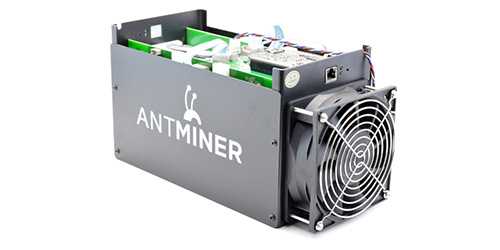
- Avalon 6. Модель с достойной производительностью, позволяющей получать около 0,12 Bitcoin ежемесячно.

- AntMiner S7. Оборудование появилось еще в 2015-м году, но по-прежнему предлагает хорошую производительность в 0,15 Bitcoin в месяц.
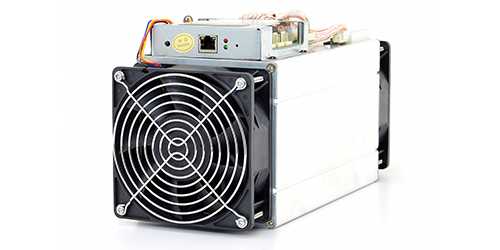
- AntMiner S9. Производительная модель ASIC, способная добывать ежемесячно до 0,5 BTC. Оборудование подходит для серьезных добытчиков.

- AntMiner R4. Модель для домашнего использования с встроенным охлаждением и уменьшенной шумностью. Величина окупаемости наступает в течение одного года.
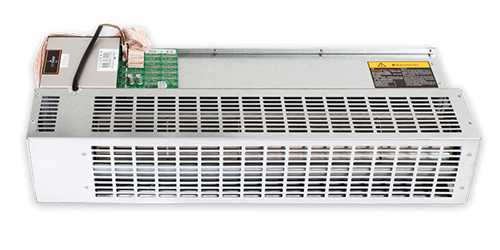
- Avalon 7. Еще одна модель начального уровня, позволяющая обойтись без значительных капиталовложений при окупаемости около двух лет.
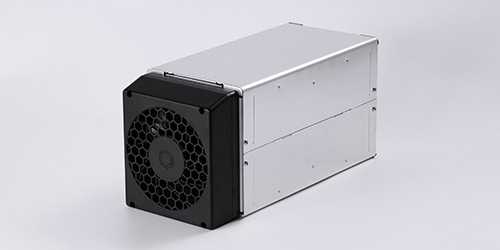
Прибыльность майнинга
Если изначально майнинг считался «золотым дном» для заработка, то сегодня его рентабельность за счет расширения количества участников и появления более сложных вычислительных задач существенно снижена. В случае появления новых технологических решений есть возможность рассчитывать на повторный рост эффективности.
В качестве различных вариантов работы можно выделить участие в пулах, когда несколько майнеров объединяются для совместной добычи токенов с пропорциональным распределением монет.
Альтернативным вариантом можно назвать облачный майнинг, когда покупка оборудования не требуется, а майнинг осуществляется посредством аренды мощностей на облачных сервисах. Подобный способ работы позволяет получить более высокую прибыльность при комфорте в доме, но при этом повышаются риски столкновения с мошенниками.
Таким образом, каждый майнер может выбирать между тремя вариантами действий.
Рейтинг: 5/5 - 1 голосов
crypt-mining.net
Antminer V9 — новый ASIC от Bitmain
Январь запомнился выпуском двух новых моделей майнеров от Bitmain. Сначала представили A3 с рекордным сроком окупаемости, а потом показали T9+ на алгоритме SHA-256. Сейчас на китайской версии сайта появился Antminer V9. Заказать в Европу вряд ли получится, но разобраться стоит.
Характеристики Antminer V9
Алгоритм майнинга — SHA-256. Хэшрейт — 4 TH/s ± 5%. Цена — 2108 юаней/335 долларов. Количество чипов — 135. Энергопотребление — 1027 Вт + 10%. Номинальное напряжение — 11.6 ~ 13.0V. Габариты — 301 х 123 х 155 миллиметра.Прибыльность и окупаемость Antminer V9
Традиционно заходим на WhatToMine и вбиваем нужные данные: 4 TH/s
Дневной доход, без учёта расходов на электричество, в Биткоине и Биткоин Кэш составляет 2,89 и 2,86 доллара соответственно. Если вычесть фиксированные на сайте затраты в размере 2,46 доллара, получается 42 и 39 центов чистой прибыли.
В итоге на окупаемость партии из 30 майнеров уйдёт 798 дней, а это больше двух лет.
Где купить ASIC
Похоже, стать обладателем нового Antminer не получится. Модель отображается только на китайской версии сайта, так что мы явно проходим мимо.
Поставки разбиты на два этапа. 80 процентов партии разошлют в апреле, а оставшиеся 20 — в мае. Кстати, продают исключительно в количестве, кратном 30. Покупатели могли оформить заявку на 30, 60, 90 майнеров и так далее.
UPD: Bitmain запускает Antminer V9 на другие рынки. Стоимость — 345 долларов, поставки обещают в марте. Продают от пяти штук. Заказывать традиционно на официальном сайте.
Что предлагают китайцам
V9 напоминает старый Antminer S7 со слегка ограниченными характеристиками. К тому же цена, прибыльность и минимальный размер покупки намекают на желание Bitmain избавиться от заполненного склада.
Даже если модели на разойдутся, компания вряд ли развалится. Напомним, заработок Bitmain за прошлый год составил 2,3 миллиарда долларов. Для кого-то майнинг по-прежнему остаётся выгодным.
Подписывайтесь на наш канал в Телеграме, чтобы быть в курсе.
2bitcoins.ru
Best Bitcoin Mining Hardware for 2018
The following page reviews the best hardware available today in order to make some sort of a profit with Bitcoin mining.
If you’re completely new to Bitcoin mining please read our “Is Bitcoin mining still profitable?” post before moving on. It will give you a good idea about the profitability of mining and will make you think twice before entering this very competitive niche.
If however, you are aware of the competitive nature of Bitcoin mining and still want to get in the game, here you will be able to find the best Bitcoin mining hardware available. The good news is that there’s not many mining hardware companies left that make ASIC miners so choosing will probably be easy. That’s also the bad news. Even though many websites state long lists of Bitcoin mining hardware, only a handful of mining rigs can deal with the rising Bitcoin mining difficulty that’s out there these day.
How to compare Bitcoin miners
Below is a side by side comparison of all relevant miners. Underneath the table you’ll be able to see a summarized review of each of the miners. Keep in mind that in order to see how profitable you can be with any Bitcoin miner you’ll need to make some calculations based on your electricity cost, the Bitcoin exchange rate and the increase in difficulty throughout time. Since not all of these variables are knows you will have to guess some as best as you can.
- Released
- How much electricity does your miner consume?Power consumption
- Power efficiency
- How "fast" can your miner mine BitcoinsHash rate
- Dimensions
- Weight
- This does not include hardware cost, electricity cost, or changes in BTC rate and mining difficultyRevenue in vacum*
- Price
- Our rating of the miner taking into account all specifications aboveOverall rating
Use our basic Bitcoin mining calculator to help you compare miners
AntMiner S5 Bitcoin Miner Summorized Review
The AntMiner S5 is the entry level Bitcoin miner for someone who isn’t ready to part away with more than a few hundred bucks. Users who have purchased it seem mostly pleased with the device. However this is an outdated device and with today’s mining difficulty and decreasing block reward you won’t make more than 0.05 BTC each money in revenue. This means you’ll need to run it for about one year and 8 months to get a full Bitcoin. Some customers also complained about the device being too noisy, but that’s just how a miner works – it’s loud and hot.Click here to learn more about the AntMiner S5
Avalon 6 BitcoinMiner Summorized Review
The Avalon 6 is a great contender for both S5 and S7 AntMiners. From the small amount of reviews that can be found online people are saying that it’s not nearly as loud as your usual miner and the hash rate is pretty reasonable. However at the current price tag I see little reason to choose it over the competition, it’s $100 more than the S7 that brings to the table superior results.Using the Avalon 6 you can make a revenue of 0.12BTC each month, hardly something to write home about at the moment.
Click here to learn more about the Avalon 6
AntMiner S7 Bitcoin Miner Summorized Review
The AntMiser S7 was the raining champion up until a few months ago. Even at today’s difficulty levels and with the block reward halving you can still make 0.15BTC a month. It’s not a lot at the moment but if the Bitcoin price continues to rise it may be a profitable investment.However I would’t suggest buying this rig due to the fact that it’s neither here nor there. It’s too expensive for an entry level device and it’s too weak to generate any substantial amount of Bitcoins. Users who bought the device seem generally happy with it however it was first introduced on August 2015, so it’s not that new.
Click here to learn more about the AntMiner S7
AntMiner S9 Bitcoin Miner Summorized Review
The most advanced and most efficient Bitcoin miner today. If you’re serious about Bitcoin mining this is your rig. But since this miner just came out it’s possible that Bitcoin mining difficulty will now increase even more. At the current difficulty this miner can mine around 0.5 Bitcoins every month which makes it seem pretty profitable. However we did not take into account the electricity costs, pool fees and hardware cost. Not to mention the fact the difficulty can rise and the Bitcoin price can drop.It seems that even though this is the toughest miner out there, there’s only a small amount of time until it too will become outdated. Until that happens though, it looks like a pretty reliable piece of equipment.
Click here to learn more about the AntMiner S9
Antminer R4 Bitcoin Miner Summarized Review
The Antminer R4 is intended for hobby mining – basically people who want to mine Bitcoins at home. Even though it can’t compete with the S9 it will probably be a good contender for the S7. The main advantage it has over other miners is the fact that it is has a specialized cooling unit that is much quieter than any other Bitcoin miner out there – since it’s made for a home environment.
According to our calculations this miner should break even in about 12 months making it a pretty risky investment as most miners become obsolete after 6-9 months. However if Bitcoin’s price continues to rise this miner may yet yield a good return on investment.
Click here to learn more about the Antminer R4
Avalon 7 Bitcoin Miner Summarized Review
The avalon 721 (or Avalon 7 as it is known commonly) is the latest Bitcoin miner supplied by Avalon in late 2016. It has a lower price tags than most of the advanced miners but is also less powerful. It seems to be a good choice for people who are looking for a cheaper entry level miner and don’t want to go for an Antminer S7.
According to our calculations this miner should break even in about 24 months, making it a pretty risky investment. You can also connect up to 5 Avalon 721s in a row creating a powerful 30 TH/s mining rig.
Click here to view deals on the Avalon 7
99bitcoins.com
Mining - Bitcoin Wiki
Introduction
Mining is the process of adding transaction records to Bitcoin's public ledger of past transactions (and a "mining rig" is a colloquial metaphor for a single computer system that performs the necessary computations for "mining"). This ledger of past transactions is called the block chain as it is a chain of blocks. The block chain serves to confirm transactions to the rest of the network as having taken place. Bitcoin nodes use the block chain to distinguish legitimate Bitcoin transactions from attempts to re-spend coins that have already been spent elsewhere.
Mining is intentionally designed to be resource-intensive and difficult so that the number of blocks found each day by miners remains steady. Individual blocks must contain a proof of work to be considered valid. This proof of work is verified by other Bitcoin nodes each time they receive a block. Bitcoin uses the hashcash proof-of-work function.
The primary purpose of mining is to allow Bitcoin nodes to reach a secure, tamper-resistant consensus. Mining is also the mechanism used to introduce Bitcoins into the system: Miners are paid any transaction fees as well as a "subsidy" of newly created coins. This both serves the purpose of disseminating new coins in a decentralized manner as well as motivating people to provide security for the system.
Bitcoin mining is so called because it resembles the mining of other commodities: it requires exertion and it slowly makes new currency available at a rate that resembles the rate at which commodities like gold are mined from the ground.
Difficulty
The Computationally-Difficult Problem
Mining a block is difficult because the SHA-256 hash of a block's header must be lower than or equal to the target in order for the block to be accepted by the network. This problem can be simplified for explanation purposes: The hash of a block must start with a certain number of zeros. The probability of calculating a hash that starts with many zeros is very low, therefore many attempts must be made. In order to generate a new hash each round, a nonce is incremented. See Proof of work for more information.
The Difficulty Metric
The difficulty is the measure of how difficult it is to find a new block compared to the easiest it can ever be. The rate is recalculated every 2,016 blocks to a value such that the previous 2,016 blocks would have been generated in exactly one fortnight (two weeks) had everyone been mining at this difficulty. This is expected yield, on average, one block every ten minutes.
As more miners join, the rate of block creation increases. As the rate of block generation increases, the difficulty rises to compensate, which has a balancing of effect due to reducing the rate of block-creation. Any blocks released by malicious miners that do not meet the required difficulty target will simply be rejected by the other participants in the network.
Reward
When a block is discovered, the discoverer may award themselves a certain number of bitcoins, which is agreed-upon by everyone in the network. Currently this bounty is 12.5 bitcoins; this value will halve every 210,000 blocks. See Controlled Currency Supply.
Additionally, the miner is awarded the fees paid by users sending transactions. The fee is an incentive for the miner to include the transaction in their block. In the future, as the number of new bitcoins miners are allowed to create in each block dwindles, the fees will make up a much more important percentage of mining income.
The mining ecosystem
Hardware

Users have used various types of hardware over time to mine blocks. Hardware specifications and performance statistics are detailed on the Mining Hardware Comparison page.
CPU Mining
Early Bitcoin client versions allowed users to use their CPUs to mine. The advent of GPU mining made CPU mining financially unwise as the hashrate of the network grew to such a degree that the amount of bitcoins produced by CPU mining became lower than the cost of power to operate a CPU. The option was therefore removed from the core Bitcoin client's user interface.
GPU Mining
GPU Mining is drastically faster and more efficient than CPU mining. See the main article: Why a GPU mines faster than a CPU. A variety of popular mining rigs have been documented.
FPGA Mining
FPGA mining is a very efficient and fast way to mine, comparable to GPU mining and drastically outperforming CPU mining. FPGAs typically consume very small amounts of power with relatively high hash ratings, making them more viable and efficient than GPU mining. See Mining Hardware Comparison for FPGA hardware specifications and statistics.
ASIC Mining
An application-specific integrated circuit, or ASIC, is a microchip designed and manufactured for a very specific purpose. ASICs designed for Bitcoin mining were first released in 2013. For the amount of power they consume, they are vastly faster than all previous technologies and already have made GPU mining financially.
Mining services (Cloud mining)
Mining contractors provide mining services with performance specified by contract, often referred to as a "Mining Contract." They may, for example, rent out a specific level of mining capacity for a set price at a specific duration.
Pools
As more and more miners competed for the limited supply of blocks, individuals found that they were working for months without finding a block and receiving any reward for their mining efforts. This made mining something of a gamble. To address the variance in their income miners started organizing themselves into pools so that they could share rewards more evenly. See Pooled mining and Comparison of mining pools.
History
Bitcoin's public ledger (the "block chain") was started on January 3rd, 2009 at 18:15 UTC presumably by Satoshi Nakamoto. The first block is known as the genesis block. The first transaction recorded in the first block was a single transaction paying the reward of 50 new bitcoins to its creator.
See Also
en.bitcoin.it
How to Setup a Bitcoin ASIC Miner – Bitcoin.com
In the early days of Bitcoin, mining used to be done using the CPU on your computer. Nowadays though as the amount of people mining has increased the difficulty of Bitcoin mining has also increased too. This high difficulty and hash rate has mostly been fueled by the introduction of ASIC mining chips. Bitcoin uses SHA-256 cryptographic hash function to secure the blocks and create the hash for each block. This encryption is what protects the transactions in the block from being altered.
Application-Specific Integrated Circuit
ASICs allow miners to use hardware made specifically for Bitcoin or other SHA-256 algo coins. An ASIC has benefits over CPU, GPU and FPGAs due to being designed for one specific task. They are able to mine Bitcoin at a higher hash rate (speed of processing transactions) than CPUs, GPUs and FPGAs. Several manufacturers produce their own ASIC chips and miners. For this part of the Bitcoin mining guide we will use the current top miner on the market the Bitmain AntMiner S9.
Bitcoin mining has gotten so high powered with the race to be the winner to solve a block that it has evolved into pooled mining where a group of miners want to have as much hash power as possible to get a share of the Bitcoin block reward. By combining your hash rate with that of many others you have a better chance of solving blocks (creating a block) and getting the block reward. Bitcoin.com has launched it’s own mining pool with competitive pricing, which you can register for and begin pool mining today.
The Bitmain S9 is composed of 189 ASIC chips. The total hash rate (mining speed) of the S9 is roughly 12 to 14 TH/s (terahashes per second). CPUs were only able to do a few MH/s (megahashes per second).
Bitcoin mining setup is simple
As the S9 requires 1275 watts of power depending on your power type available you can either use two 110v PSUs such as a Gold rated 1000 watt PSU and a 650 watt PSU to power the miner. If you are able to use 220v power and have the correct outlets or PDU (Power Distribution Unit) you can use special PSUs that are either made specifically for Bitcoin mining or even those made for servers.
Connect the PSU/s to the S9 using PCIe cable connections on your PSU. Once connected you will connect an ethernet cable to the miner itself.
The next step is to turn on your PSU and the miner will power up from there. Next get on a computer or mobile device that is connected to the same network as the miner. You will need to enter in the miner’s IP address. Since most miners now come with DHCP enabled you do not have to manually set the IP address, you just need to look at the IP table on your router or use a scanning tool. A scanning tool like AngryIP allows you to scan every device on your network and see its IP address. When you run the scan you will see AntMiner as one of the devices. From there in your browser window you type in the miners address.
This will take you to the first screen to login to the miner. In the case of the S9 the login box that comes up the username is root and the password is root. Once you have logged in you will see the system overview. We suggest you go to the Admin tab first and change the password to one of your own choosing. Your next step is to go to the Miner Configuration tab. This is where you will add your information for the mining pool you will want to mine on.
You will need to enter in the stratum/IP address of your mining pool, then your worker name followed by password for your worker on the mining pool. Note: not all pools require a password, you can just put “123” if you want.
AntMiner general configuration menu
Once you have saved your setting the miner will start mining on your pool. It can take from a couple minutes to up to an hour for your full hash rate to show up on your pool. Now you can go to the Miner Status page and you will see how your miner is performing and if the connection is live, temps, hash rate, etc. If you also go to your Bitcoin mining pool you can see your status. You are now mining Bitcoin.
If you are mining on the Bitcoin.com mining pool and have questions on getting started, fees, or payouts, simply login and head over to the Getting Started page to read some common question and answers. There is also a community forum where users can engage with other miners.
AntMiner miner status menu
www.bitcoin.com
Mining hardware comparison - Bitcoin Wiki
See also: Non-specialized hardware comparison
Below are statistics about the Bitcoin Mining performance of ASIC hardware and only includes specialized equipment that has been shipped.
GPUs, CPUs and other hardware not specifically designed for Bitcoin mining can be found in the Non-specialized_hardware_comparison.
Notes:
- Mhash/s = millions hashes per second (double sha256 raw speed performance; may not be very energy efficient with some models)
- Mhash/J = millions hashes per joule (energy efficiency; 1 joule of energy is 1 watt during 1 second: 1 J = 1 W*s)
- W = watt (maximum power consumption, i.e. energy per unit of time: 1 W = 1 J/s)
ASIC
Be sure to research any of these vendors and machines intensely before spending any money.
| 180,000 | 500 | 800 | 360 | 299[2] | Discontinued | Ethernet | GPL infringement |
| 1,000,000 | 900 | 442 | 1100 | 2259 | Discontinued | Ethernet | GPL infringement |
| 441,000 | 1300 | 1154 | 340 | 382[2] | Discontinued | Ethernet | GPL infringement |
| 2,000,000 | 1429 | 1429 | 1400 | 1400 | Discontinued | Ethernet | GPL infringement |
| 1,155,000 | 1957 | 3121 | 590 | 370 | Discontinued | Ethernet | GPL infringement |
| 7,722,000 | 2247 | 3347 | 3,436 | 2,307 | No | Ethernet | GPL infringement |
| 4,860,000 | 4000 | 2666 | 1,210 | 1,823 | No | Ethernet | GPL infringement |
| 14,000,000 | 10182 | 5833 | 1,375 | 2,400 | Yes | Ethernet | GPL infringement |
| 1,600 | 800 | 55 | 2 | 29 | Discontinued | USB | code, samples |
| 2,000 | 1,000 | 115 | 2 | 17 | Discontinued | USB | code |
| 63,000 | 1,000 | 1658 | 63 | 38 | Yes | USB | code |
| 10,752 | 129 | 28[13] | 83 | 350[2][13] | Discontinued | Ethernet | samples |
| 30,000 | 150 | 55 | 200 | 550[2][13] | Discontinued | Ethernet | samples |
| 336 | 130 | 17[13] | 2.55 | 20[13] | Discontinued | USB | samples |
| 800,000 | 888 | 2500 | 900 | 320[2] | Discontinued | Proprietary | samples |
| 1,400,000 | 1333 | 2333 | 1100 | 600[2] | Discontinued | Proprietary | No |
| 66,300 [16] | 107 | 52.34 | 620[16] | 1299[17] | Discontinued | Ethernet, Wifi | code |
| 82,000[17] | 117 | 54.70 | 700 | 1499[17] | Discontinued | Ethernet, Wifi | code |
| 82,000[17] | 117 | 54.70 | 700 | 1499[17] | Discontinued | Ethernet, Wifi | code |
| 300,000 | 3075 | Discontinued | USB or Ethernet | code, docs, samples | |||
| 800,000 | Discontinued | USB or Ethernet | code, docs, samples | ||||
| 3,500,000 | 1080 | Discontinued | Ethernet | ? | |||
| 6,000,000 | 6000 | 1000 | No | Ethernet | ? | ||
| 7,300,000 | 6350 | 5035 | 1150 | 1450 | Yes | Ethernet | ? |
| 8,800,000 | 6670 | 4730 | 1320 | 1860 | Yes | Ethernet | ? |
| 11,000,000 | 9170 | 3800 | 1200 | 2900 | Bulk only | Ethernet | ? |
| 5,000 | 1,176 | 24 | 4.25 | 209 | Discontinued | USB | docs, samples |
| 5,000 | 166 | 18.24 | 30 | 274 | Discontinued | USB | docs, samples |
| 10,000 | 200 | 50 | Discontinued | USB | docs, samples | ||
| 25,000 | 166 | 20.00 | 150 | 1249 | Discontinued | USB | docs, samples |
| 30,000 | 46.22 | 649 | Discontinued | USB | docs, samples | ||
| 50,000 | 166 | 50 | 300 | 984 | Discontinued | USB | docs, samples |
| 60,000 | 250 | 46.18 | 240 | 1299 | Discontinued | USB | docs, samples |
| 230,000 | 500 | 399 (used) | Discontinued | USB | docs | ||
| 500,000 | 185 | 2700 | 22484 | Discontinued | Wifi | docs, samples | |
| 700,000 | 1428 | 508 | 490 | 1379 | Discontinued | PCIe, USB | docs, samples |
| Discontinued | RPi GPIO | No | |||||
| 85,000 | 13 | 650 | 6489[20] | Discontinued | Ethernet, Wifi, USB | code | |
| 100,000 | 1000 | 270 | 100 | 370 | Discontinued | Ethernet | docs, samples |
| 2,000,000 | 1000 | 333 | 2000 | 6000 | Discontinued | Ethernet | ? |
| 2,500 | 1000 | 17.8 | 2.5 | 140 | Discontinued | USB | code, samples |
| 310,000 | 954 | 1003 | 324 | 309[2] | Discontinued | RPi GPIO | No |
| 616,000 | 951 | 1760 | 648 | 350[2] | Discontinued | RPi GPIO | No |
| 1,600,000 | 1066.67 | 2100 | 1500 | Discontinued | Ethernet | docs, code, samples | |
| Discontinued | USB | code, samples | |||||
| 6,300,000 | 7140 | 4468 | 882 | 1410 | No | Ethernet | No |
| 9,000,000 | 6900 | 6428 | 1300 | 1400 | Yes | Ethernet | No |
| 14,000,000 | 10500 | 3600 | 1330 | 3880 | Yes | Ethernet | No |
| 18,000,000 | 11100 | 3440 | 1620 | 5230 | Yes | Ethernet | No |
| 20,000 | 869 | 29 | 23 | 688 | Discontinued | USB | docs, samples |
| Discontinued | USB | docs, samples | |||||
| 1100,000[26] | xxxx | 1000[26] | 599[26] | Discontinued | USB | No | |
| 4,500,000[27] | xxxx | 3000[27] | 2299[27] | Discontinued | USB | No | |
| 400,000 | 909 | 71 | 440 | 5600 | Discontinued | Ethernet, USB | docs |
| 1,200,000 | 909 | 169 | 1320 | 7080 | Discontinued | USB | docs, samples |
| 2,000,000 | 909 | 294 | 2200 | 6800 | Discontinued | USB | docs |
| 5,200 | 160 | 260 | 32 | 20 | Discontinued | USB | samples |
| 100,000 | 50.04 | 250 | 1995 | Discontinued | Ethernet | code, samples | |
| 250,000 | 400 | 66 | 300[2] | 2995 | Discontinued | Ethernet | code, samples |
| 500,000 | 400 | 80 | 600[2] | 4995 | Discontinued | Ethernet | code, samples |
| 3,000,000 | 1429 | 231 | 2100 | 12995 [28] | Discontinued | Ethernet | code, samples |
| Discontinued | USB | docs, samples | |||||
| 120,000 | 705 | 56 | 170 | 2160[29] | No | code, samples | |
| 2,000 | 800 | 2.5 | Discontinued | USB | code, docs, samples | ||
| 3,700 | 740 | 74 | 5 | 50 | Discontinued | USB | code, docs, samples |
| 2,600 | 1040 | 4 | 2.5 | 640 | Discontinued | USB | code, samples |
| 450,000 | 1000 | 2250 | 450 | 200[2] | Discontinued | USB | code, samples |
| 470,000 | 1000 | 2238 | 470 | 210[2] | Discontinued | USB | code, samples |
| 450,000 | 937 | 750 | 480 | 599[2] | Discontinued | RPi GPIO | |
| 32,000 | 711 | 500 | 45 | 65[2] | Discontinued | USB | code, samples |
| 110,000 | 917 | 1250 | 120 | 88[2] | Discontinued | USB | code, samples |
| 800,000 | 800 | 2462 | 1000 | 325[2] | Discontinued | USB | code, samples |
| 1,400,000 | 1120 | 492 | 1250 | 2845 | Discontinued | Ethernet | code, samples |
| 1,700,000 | 1545 | 1299 | 1100 | 1309[2] | Discontinued | Ethernet | code, samples |
| 4,500,000 | 1500 | 1068 | 3000 | 4121 | Discontinued | Ethernet | code, samples |
| 4,900,000 | 1633 | 2361 | 3000 | 2075 | Discontinued | Ethernet | code |
| 5,500,000 | 1506 | 2460 | 3650 | 2235 | Discontinued | Ethernet | code |
| 4,500 | 140 | 18 | 32 | 250 | No | USB | samples |
| 18,000 | 140 | 20 | 127 | 900 | No | USB | samples |
| 90,000 | 140 | 15 | 640 | 6000 | No | USB | |
| 180,000 | 140 | 17.14 | 1,280 | 10500 | No | USB | |
| 4,500 | 1174 | 20 | 3.83 | 216 | Discontinued | USB | code, samples |
| Discontinued | Ethernet | ||||||
| 9,200,000 | 2046 | Discontinued | Ethernet | ||||
| 11,500,000 | 1785 | Yes | Ethernet |
- ↑ Ant Miner S1 product page Retrieved 2014-03-11
- ↑ 2.002.012.022.032.042.052.062.072.082.092.102.112.122.132.142.152.16 Power supply not included
- ↑ Ant Miner S2 product page Retrieved 2014-05-24
- ↑ Ant Miner S3 product page Retrieved 2014-08-06
- ↑ Ant Miner S4 product page Retrieved 2014-10-01
- ↑ Ant Miner S5 product page Retrieved 2015-02-04
- ↑ Ant Miner S5+ product page Retrieved 2015-09-16
- ↑ Ant Miner S7 product page Retrieved 2015-09-16
- ↑ Ant Miner S9 product page Retrieved 2016-07-02
- ↑ Ant Miner U1 Product page Retrieved 2014-03-11
- ↑ Ant Miner U2+ Product page Retrieved 2014-03-11
- ↑ Antminer U3 product page Retrieved 2015-02-06
- ↑ 13.013.113.213.313.4 Actual price is in bitcoins. USD value estimated.
- ↑ ASICMiner Tube Sales Thread
- ↑ ASICMiner Prisma Sales Thread
- ↑ 16.016.1 http://garzikrants.blogspot.com/2013/02/avalon-miner-power-usage.html
- ↑ 17.017.117.217.317.4 "Avalon ASIC". Avalon. Retrieved January 30, 2013.
- ↑ "250 GH/s Rack Mount Bitcoin Miner". Butterfly Labs. Retrieved September 2, 2014.
- ↑ "700GH/s Bitcoin Mining Card". Butterfly Labs. Retrieved September 25, 2014.
- ↑ Depends on user configuration available from http://www.bitmine.ch
- ↑ 21.021.1 "BTCGarden Sales Thread"
- ↑ Company home page Retrieved 2018-01-22
- ↑ Product page Retrieved 2018-01-22
- ↑ Anouncement Retrieved 2018-01-22
- ↑ Product page Retrieved 2018-01-22
- ↑ 26.026.126.2 "HashCoins Apollo v3". HashCoins.
- ↑ 27.027.127.2 "HashCoins Zeus v3". HashCoins.
- ↑ 28.028.1 "KnC Neptunes 3TH first ever 20nm Chip" KNC Miner
- ↑ Actual costs higher outside Russia
- ↑ 30.030.130.230.330.430.5 "Rockminer Store"
- ↑ "SP10 Dawson June Batch".
- ↑ "SP20 Jackson" Retrieved 2015-02-06
- ↑ "SP30 Yukon September Batch 1".
- ↑ "SP31 Yukon" Retrieved 2015-02-06
- ↑ "SP35 Yukon" Retrieved 2015-02-06
- ↑ "4.5 GH/sec Modular Board (Klondike 16)".
- ↑ "18 GH/sec Modular board (Klondike 64)".
FPGA
| 100[1] | 0.10 | 995[2] | ||
| 100[3] | 14.7 | 0.22 | 6.8[3] | 440[3] |
| 832[4] | 10.4 | 1.38 | 80[4] | 599[4] |
| 25,200[5] | 20.16 | 1.64 | 1,250[5] | 15,295[6] |
| 5[7] | 0.03 | 149[8] | ||
| 380[9] | 19.79 | 0.66 | 19.2[9] | 569[9] |
| 6,000 | ??? | 2.15 | ??? | 2,795 |
| 400[11] | 26 | 350[11] | ||
| 800[12] | 20 | 0.75 | 40[12] | 1,069[12] |
| 80[13] | 0.13 | 595[14] | ||
| 400[15] | 23.25 | 0.72 | 17.2[15] | 550[16] |
| 90[17] | 0.27 | 325[18] | ||
| 215[17] | 0.52 | 406[19] | ||
| 860[17] | 0.65 | 1,304[20] |
- ↑ Fpgaminer (May 19, 2011). "Official Open Source FPGA Bitcoin Miner". Bitcointalk.org. Retrieved February 7, 2013.
- ↑ "AES-S6DEV-LX150T-G Parts". Avnet Express. Retrieved February 7, 2013.
- ↑ 3.03.13.2 NewMeat1 (August 18, 2011). "Custom FPGA Board for Sale!". Bitcointalk.org. Retrieved January 30, 2013.
- ↑ 4.04.14.2 "BitForce SHA256 Single – Technical Specifications". Butterfly Labs. Retrieved January 30, 2013.
- ↑ 5.05.1 "Products". Butterfly Labs. Archived from the original on May 14, 2012. Retrieved February 7, 2013.
- ↑ "Order Form – BitForce SHA256 – Mini Rig". Butterfly Labs. Retrieved January 30, 2013.
- ↑ The Seven (June 3, 2011). "Re: Official Open Source FPGA Bitcoin Miner (Smaller Devices Now Supported!)". Bitcointalk.org. Retrieved February 7, 2013.
- ↑ "Nexys™2 Spartan-3E FPGA Board". Digilent. Retrieved January 30, 2013.
- ↑ 9.09.19.2 Nzghang (November 9, 2011). "FPGA development board 'Icarus' – DisContinued/ important announcement". Bitcointalk.org. Retrieved January 30, 2013.
- ↑ Nzghang (May 6, 2012). "FPGA development board "Lancelot" - accept bitsteam developer's orders.". Bitcointalk.org. Retrieved January 30, 2013.
- ↑ 11.011.1 Black Arrow (Jun 11, 2013). "Lancelot - Heavy Duty Dual Spartan6 Bitcoin Mining Device". cardreaderfactory.com. Retrieved Jun 11, 2013.
- ↑ 12.012.112.2 "ModMiner Quad". BTCFPGA. Retrieved January 30, 2013.
- ↑ Fpgaminer (May 4, 2011). "Re: FPGA mining". Bitcointalk.org. Retrieved February 7, 2013.
- ↑ "Altera DE2-115 Development and Education Board". Terasic. Retrieved January 30, 2013.
- ↑ 15.015.1 "FPGA Mining Power Measurements". FPGA Mining Power Measurements.
- ↑ "FPGA Mining Store". FPGA Mining. Retrieved January 30, 2013.
- ↑ 17.017.117.2 http://www.ztex.de/btcminer/
- ↑ http://shop.ztex.de/product_info.php?cPath=21&products_id=62
- ↑ http://shop.ztex.de/product_info.php?cPath=21&products_id=66
- ↑ http://shop.ztex.de/product_info.php?cPath=21&products_id=74
en.bitcoin.it

